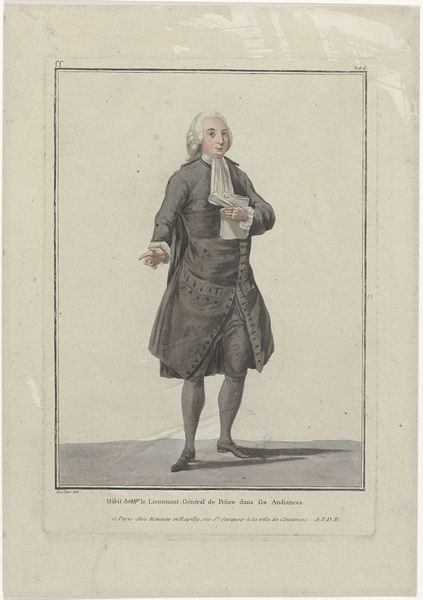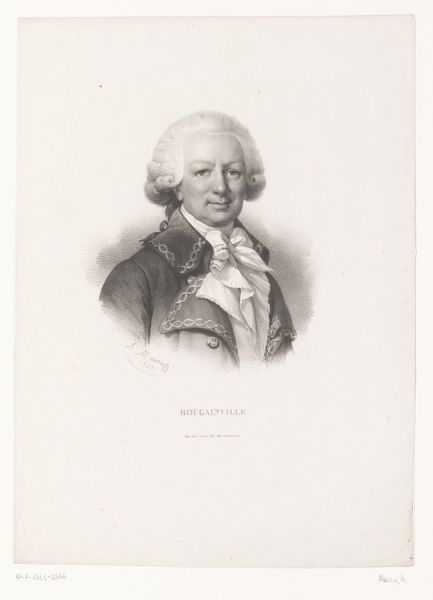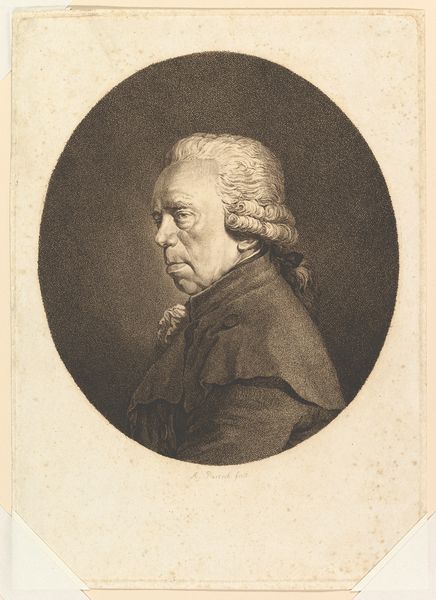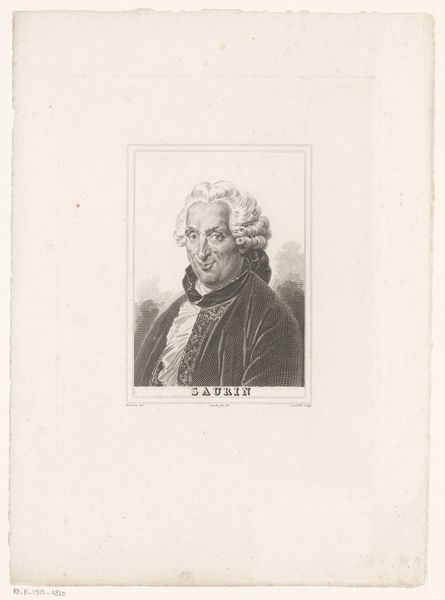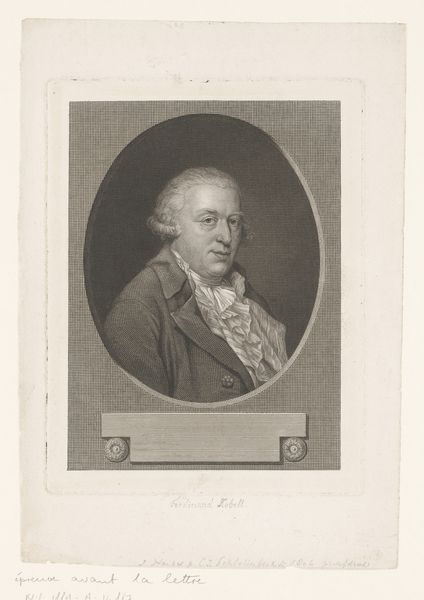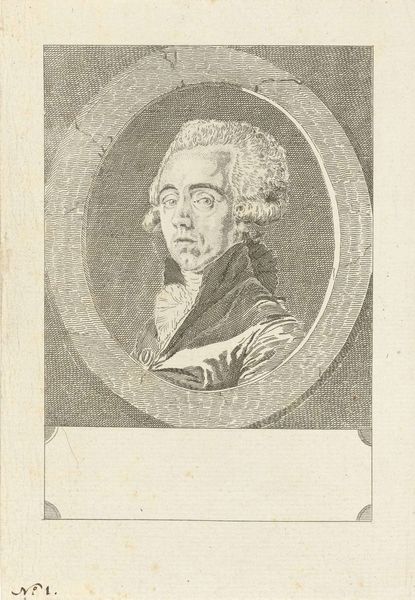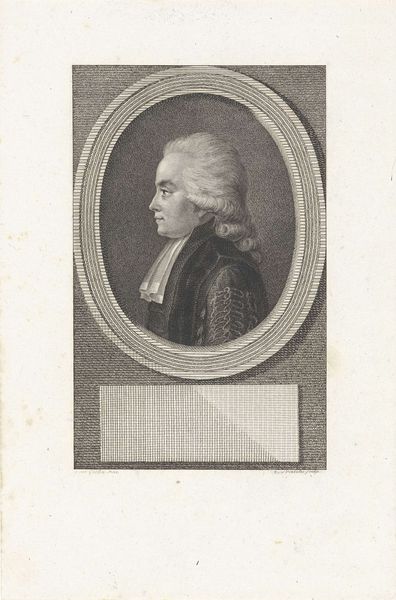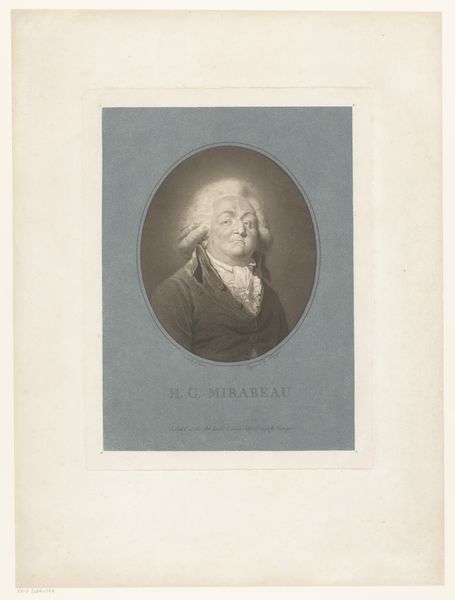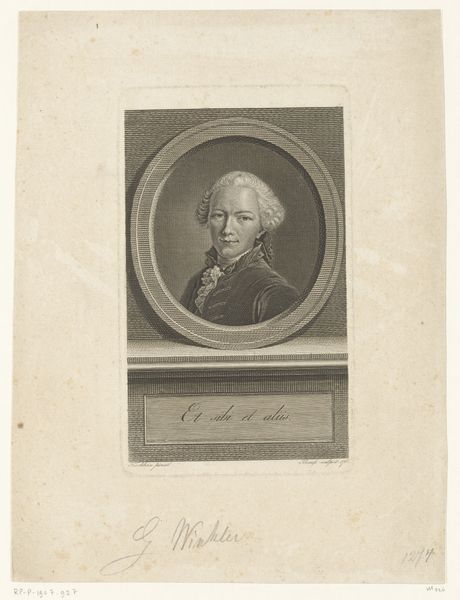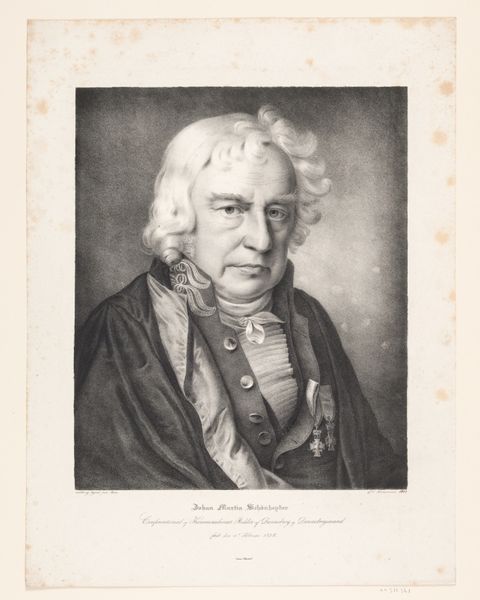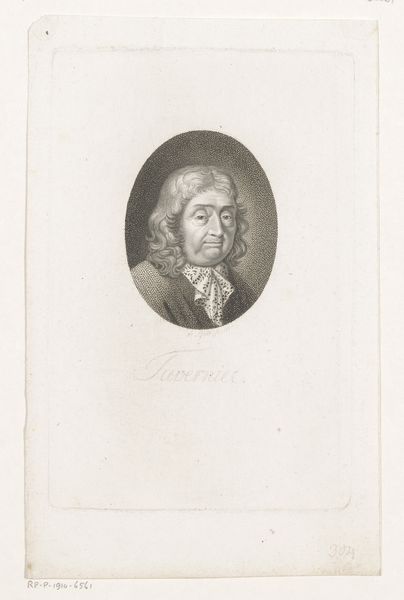
drawing, print
#
portrait
#
drawing
#
neoclacissism
# print
#
history-painting
Dimensions: height 350 mm, width 414 mm
Copyright: Rijks Museum: Open Domain
Editor: This is a print from 1791, “Portret van Honoré Gabriël Riqueti, Graaf Mirabeau.” It seems to be a drawing, maybe an etching? He looks…determined. What can you tell me about him, and the artist's choices? Curator: This portrait provides a fascinating window into the French Revolution and its key figures. Mirabeau was a complex character, a nobleman who became a leading voice for the Third Estate. What do you notice about his pose, his clothing, and the way he's framed within that oval? Editor: Well, his hand is outstretched, almost like he’s giving a speech. His clothes are fancy, but not overly so, like he’s trying to be relatable. And the oval frame… it feels like a medal or a cameo, something to commemorate him. Curator: Exactly. Consider the Neoclassical style—the deliberate classicizing of heroes. This print isn't just a portrait; it’s constructing a narrative about Mirabeau and his relationship to the people. What statement do you think the artist intended to make about Mirabeau’s position at this critical moment in history? Editor: So it’s about more than just his individual likeness. It’s about crafting his image as a leader of the revolution, a kind of bridge between the aristocracy and the common people? I hadn't considered that before. Curator: Indeed! The act of creating and distributing these images, the conscious crafting of visual rhetoric, was a vital tool of revolutionary politics, constructing and consolidating support. Understanding those visual strategies gives us insight into the Revolution itself. Editor: That really changes how I see this piece. It's not just a historical portrait; it's a carefully constructed piece of political messaging!
Comments
No comments
Be the first to comment and join the conversation on the ultimate creative platform.
